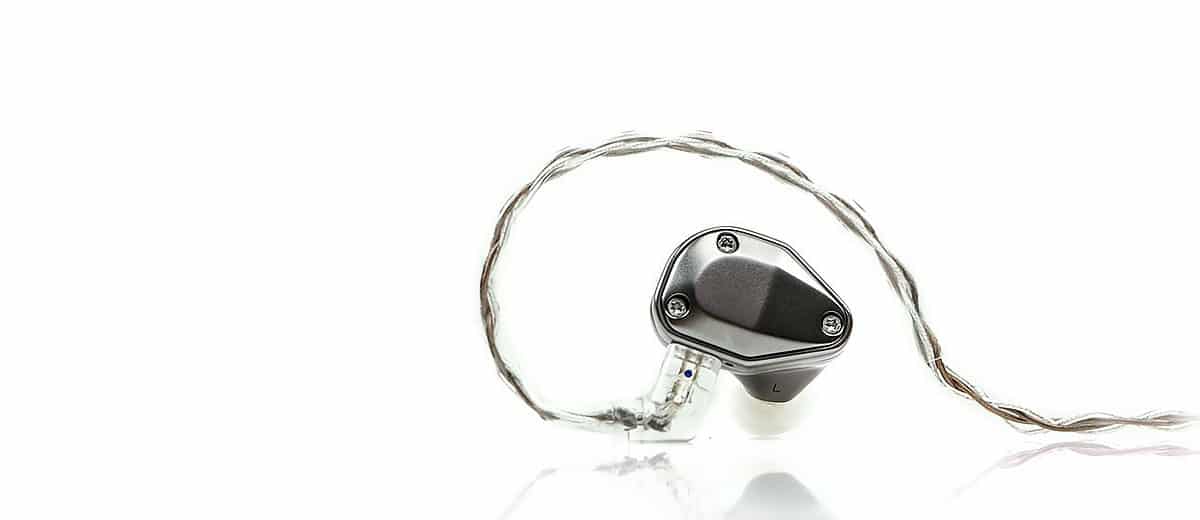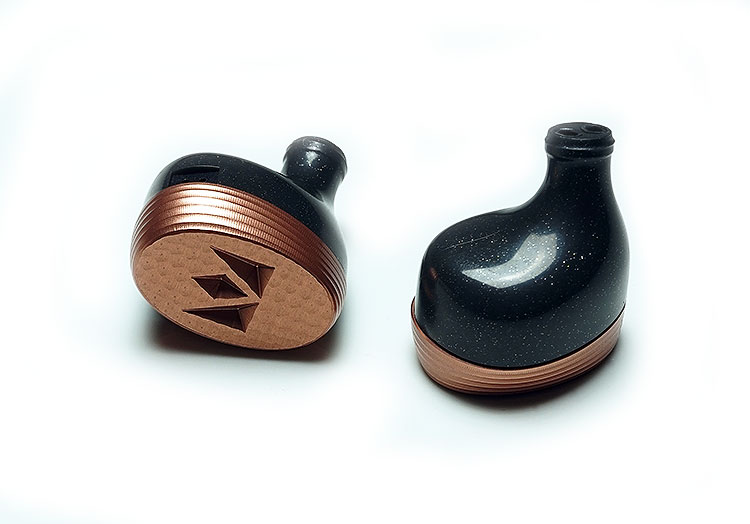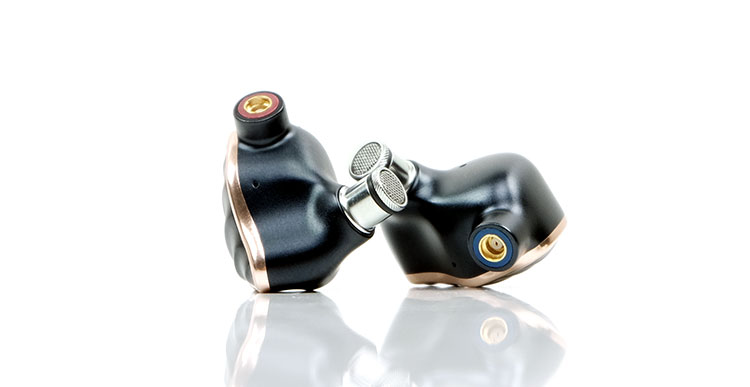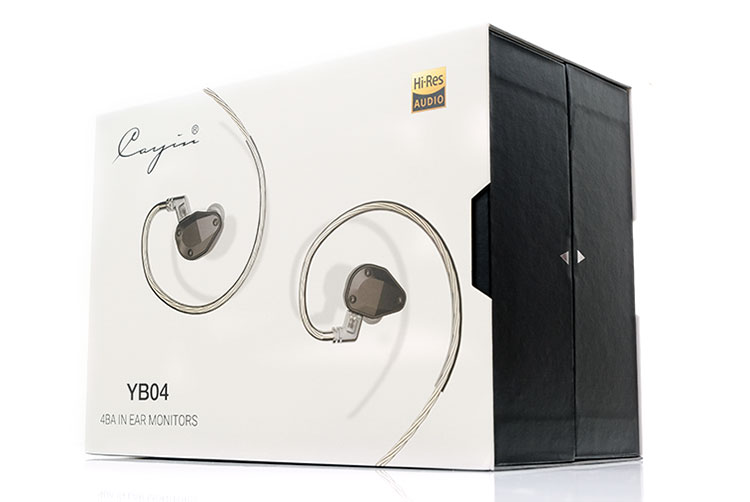Tips Synergy
The main impressions were done with the balanced tips which are the pure black single bore silicone tips and come in small, medium and large. As mentioned on page 1, Cayin has included a wide range of tips with specific tuning emphasis including bass, vocal, bi-flange and foam tips.
Bass
There is a trick to these tips. Do not insert and play the music right away because for the first few seconds they sound terrible. It could be just my ears but the entire low-end is gone and I presume because they are still forming in my ear.
After a few seconds, everything comes back and that includes a bit more bass power and depth compared to the balanced tips. It also means a bit more treble emphasis and a cleaner leaner midrange. These tips produce a bit more treble/bass contrast and more of a fun sound or an exciting sound compared to the more mid-centric balanced tips.
Vocal
It does exactly what it says on the slip – enhance the vocals. These are quite the contrast to the bass tips and tend to zero in on the mid-centric bias of the balanced tips presentation.
You get a more forward vocal and upper mids delivery with the rest of the FR tucking in a bit more behind vocal presence. A slight touch of sparkle is lost from the top end but not too much and bass depth and presence are a shade lighter than the balanced tips.
Foams
With the foams, I get a bit more instrumental body, a slightly more even-harmonic bias in the YB04 timbre and a general perception of a more languid and warmer presentation.
Compared to the silicone tips the staging is a little more center-focused and not quite the airy separation that I like with the balanced tips. They are not as contrasting as the bass tips either but sound a little more balanced.
Bi-Flange
Something is lost with the bi-flange tips, at least for me. It could be just the fitting and your experience could differ but the entire presentation suddenly lacks depth, separation, and air.
The best way I can describe is sounding very flat and lacking in dynamic range. It cheapens and dulls the YB04 refinement unnecessarily and not a set of tips I can honestly recommend which saddens me as I normally love multi-flanged tips.
Synergy
Efficiency
The YB04 is rated at 30Ω with an SPL of 113dB which places it at a medium efficiency level for portable monitors. That should mean it is easy enough to drive from most moderately powerful portable devices including smartphones but at the same time not so sensitive to pick up on low-level analog amp stage hiss.
True enough, our testing with known higher noise floors such as the FiiO M11 does show a fairly quiet black background with the YB04. I would be fairly certain that the reference DAP for any noise floor here is the Cayin N6ii.
Source Synergy
The YB04 is very a very flexible performer for me. So long as you are not looking for tons of low-end power it will pair nicely with almost any DAP out there. I
Cayin N6ii
With their own reference DAP, the N6ii, the YB04 is perhaps at its most relaxed and organic sounding. I enjoyed the pairing more with the A01’s motherboard’s slightly richer and more musical tone compared to the T01’s slightly lighter touch.
If you need a touch more solidity, warmth or impact you can open up MSEB in the N6ii’s onboard HiBy app and pump up the deep/thump bass quantity. Just make sure to offset the bloom with a cooler overall temperature setting.
I also tend to give the air setting a tiny nudge to crisp to introduce a bit more contrast to the enhanced bass weight when using MSEB. You get something like the bass tips but with a bit more weight in the mids timbre which I quite like.
FiiO M11
Switching to the more neutral and clean signature of the M11 tends to accentuate the mids and treble of the YB04 more and offering what is popularly known as a more “Asian type” tuning.
It is still quite smooth for me, nothing edgy but the bass weight is pulled back a little compared to the N6ii and the timbre is just a little lighter. The staging is airier and taller but I miss a little solidity in the midbass and lower-mids. Perhaps just a shade too ethereal unless you want a whispy type of sound.
HiBy R3 Pro
This was a great little pairing. The staging is not as airy or wide as the M11 but vocals sound a little more solid to me and more intimate.
The R3 Pro has a general bias to the mids vocal delivery which suits the YB04’s stronger vocal characteristic nicely. This is probably what stands out the most on this pairing and works my own personal preference to a tee.
It is not just the vocals that sound great. Instrumental timbre is accurate, particularly piano which has a very nice weight to its note and above-average texture. You will not get the same level of dynamic range or micro-detail as the N6ii but it does offer very good clarity at this price point.
Select Comparisons
Noble Audio Savanna
$499
Technical
The Savanna is a quad-driver BA universal monitor and our closest fit in the office to the YB04 in terms of driver use and count. We reviewed this over 3 years ago and it is still competitive today.
Sadly, the Savanna does not seem to be sold online anymore at Noble. Both use Knowles drivers in their configuration but unlike the YB04 Sonion driver complement the Savana is all Knowles.
Noble never really reveals their precise configuration but we presume it to be one for the lows, 1 for the mids and 2 for the highs. It would be similar to the YB04 though Cayin uses Sonion dual-sub for the low-end driver and dual Knowles for the rest of the range in a 2-way configuration.
As for build quality, the Cayin is more modern, more durable, and made from more expensive-looking materials. However, the Savanna is lighter, more compact and has a slightly better fitting of the two.
The YB04 cable system is far better quality than the Savanna’s Plastics One type variant but that was a 2016 cable and you see less and less of that these days thankfully.
Performance
The Savanna has no official rating but historically they are around to 30Ω marker and somewhere around 110dB SPL give or take a few in either direction.
Nothing official so just the best guess. They are not the most sensitive but not the hardest to drive either. The YB04 is also rated at 30Ω and 113dB SPL so it is shooting in the same ballpark for me.
In our testing with the Cayin N6ii, FiiO M11, and the Lotoo PAW Gold Touch both of these IEMs volumed matched quite easily with next to no difference in current demand. Both monitors behave equally as well with hiss and noise unbalanced. Both were especially good paired the M11 which can inject hiss more than the others with sensitive IEMs.
Tuning
There are a few differences that stand out for me when comparing these 2 four BA monitors presentations.
The first is Cayin’s selection of Sonion for the low-end compared to the all Knowles config of the Savanna. The Savanna low-end is drier, flatter and lacking in texture compared to the YB04. The Savana bass does have a small uptick to be fair, so it is is not dead flat.
However, the Yb04 just has the better body and warmth of the two which makes all the difference. It also extends a bit more and offers more sub-bass quantity. That injects a bit more weight and authority into instrumental notes and a slightly wetter and more natural lower-midrange timbre on the YB04.
The second major difference is staging performance. That flat low-end robs the Savanna of some depth leaving it sounding shallower with less separation than the YB04. It does sound a bit more centered as a result and not quite as good as the YB04 for imaging and clarity.
Treble on both is relatively clean and clear but not very aggressive so not the tallest sounding pair. Whereas vocals sound a little more intimate on the Savanna but not as clear or as well separated as the YB04.
FiiO FH7
$449.99
Technical
The FH7 is a dynamic and BA hybrid universal monitor and FiiO’s current flagship. We reviewed the FH7 back in July of this year and felt it to be FiiO’s most mature IEM to date.
The FH7 is also a hybrid driver configuration compared to the quad BA design of the YB04. The FH7 uses a beryllium-coated 13.6mm dynamic driver low the lows and Knowles BA drivers for the highs. The YB04 is entirely built around Knowles and Sonion dual-balanced armatures.
Both IEMs have gone for solid aluminum housing, however, the FiiO is deeper with a longer nozzle. The YB04 is flatter with a shallower nozzle and overall, the bigger monitor.
Both also come loaded with a nice selection of tips with perhaps the FH7 edging it with the inclusion of SpinFits. The YB04 uses a protruding 2-pin connection system whereas the FH7 uses the latest MMCX connector.
Both actually have very good stock cables. The YB04 with a 1.3m 8-wire, (4×4), hybrid geometry consisting of a blend of OCC and a silver alloy. The FH7 with a 1.2m Litz Monocrystalline SPC and 8 core 152 strand geometry build. They are both flashy looking and well above average in terms of low noise and good handling.
Performance
The FH7 is rated at 16Ω and 111dB SPL which is pretty good actually considering the size of the dynamic driver inside. This is compared to the YB04 quad BA’s 30Ω and 113dB SPL which on paper should marginally harder to drive but slightly more sensitive to current.
In our real-world testing with the Cayin N6ii, FiiO M11, and the Lotoo PAW Gold Touch, I honestly found them to be very close to each other for how they reacted to voltage and current. No need for high gain for either, low gain unbalanced was more than enough to drive both quite well.
If I have to give a slight edge in sensitivity it would be the FH7 though I cannot discount psychoacoustic bias due to the more aggressive dynamic driver. Neither display any sensitivity to low noise floors or background hiss on our tested DAPs.
Tuning
This is a tale of a dynamic driver with plenty of bass and treble contrast versus a more coherent, neutral to a slightly warm but otherwise linear presentation. One is built for excitement and fun, the other for control, clarity, and a bit more precision. The latter is the YB04 in case you are wondering which is which.
The dynamic driver in the FH7 makes a big difference. It is not a huge dynamic driver sound, in fact, more neutral to the FH5 in many ways. However, it has more quantity, more texture and more sub-bass reach than the YB04. It will deliver a lot more PRaT and hence the fun side. It is not too shabby with unnecessary bloom either.
The flip side is the bass to mids transition dip on the FH7 and the subsequent large 1-3k bump creates a bit of an uneven listening experience.
The YB04 is more neutral with a slight midrange 1-2k bump but nothing as elevated as the FH7. It is also not as dipped sounding in the lower-mids. As a result, it sounds more accurate to me, more coherent though perhaps not as ‘exciting’.
Treble on the FH7 is a bit more aggressive with bumps around 5-7k and a smaller nudge from 8-10k. The YB04 treble sounds a little softer and more linear which in turn helps to keep the mids harmonic balance more refined and not as ‘contrasty’ as the FH7.
It is not that the FH7 treble is overly bright but rather its pushed upper mids easily pick up on the treble overtones so it can get hot on sibilant tracks, more so than the YB04.
iBasso It04
$499
Technical
The IT04 is iBasso’s current flagship universal monitor. It uses a hybrid single 10mm dynamic driver and a triple Knowles BA configuration. The YB04 is an all-BA build but also uses Knowles drivers. I am not sure if Cayin uses similar 30017 from Knowles but they do use dual-driver configs so it is possible.
The IT04 uses a full-range ED driver and the 30017 dual-driver. The 30017 dual-driver is split between the lower treble and the upper treble with the ED driver for the mids. The YB04 splits the dual Knowles between the mids and highs so it has a bit more work to do to cover the same range.
Build-wise, the IT04 is an MMCX terminated acrylic hollow body design with heavy custom universal contouring. The 2-pin aluminum YB04 is flatter, wider, and shorter on the nozzle but also much sturdier. I find the IT04 to be very comfortable but the YB04 to be marginally better for isolation.
That dynamic driver inside the IT04 and the venting required will always lead to a bit less isolation.
The cables and tips choices on both monitors are very good and plentiful. The IT04 comes with a CB12s which is a slightly updated version of the original CB12 cable.
This is an 8-wire SPC and copper wire in a very pliable translucent jacket. It is also terminated in 2.5mm TRRS with a 3.5mm TRS piggy tail adapter. The YB04’s cable is excellent but just 3.5mm TRS. The piggytail idea from iBasso would have been great for the YB04.
Performance
The IT04 is rated at a fairly light 16Ω and 110dB compared to the Cayin’s 30Ω and 113dB SPL. On paper, the IT04 might be the slightly easier of the two to drive but the YB04 is a little more sensitive to volume levels.
As it turns out that was pretty much the result of our real-world testing with our 3 DAPs. Neither of these IEMs requires huge amounts of juice to drive them to satisfying levels.
About 40-45 in low gain unbalanced on the N6ii and 50 on the M11 thank you very much. As with the FH7, neither the IT04 nor the YB04 will pick up any undesirable background hiss on the slightly higher noise levels of the M11 analog output.
Tuning
Dynamic Driver
You will hear the dynamic driver on the IT04 make a big low-end difference with more quantity and that natural level of decay. It is a slower presentation than the tighter faster pace of the YB04 Sonion dual-sub driver combo but it does have more power and a bit more textured layering.
That tends to drive the perceived level of PRaT a bit more on the IT04 up to the lower-mids compared to the more linear and neutral levels of quantity on the YB04. It also brings the staging in a bit closer to the IT04. It is deep but forward in a nutshell.
Timbre
There is less of a lower-mid dip on the YB04 with a smoother bass-to-mid transition. The IT04, like a lot of hybrids, is a bit more disconnected with a more severe cut in the lower-mids pushing instruments a bit further back.
The timbre of the IT04 is lean and clean also from the mids up to the treble which takes a little body out of the instrumental notes for me.
Now the YB04 isn’t the richest sounding monitor either with more of a “hi-fi” sound to its timbre. However, it is more in keeping with its low end making it a more balanced-sounding presentation than the IT04. It may lose out on PRaT and power but it gains in general coherence.
Sparkle
The top-end of the IT04 has a bit more elevation, particularly around 8-10k and it sparkles and articulates with a bit more energy than the YB04. The YB04 has a bit more balance and sounds the smoother of the two. This, in turn, tips the balance of the IT04 upper mids timbre more to the bright and clean side.
The YB04, by comparison, has a better mids and upper mids harmonic balance. You simply do not get as much of that odd-harmonic overtone pushing down into percussion and vocals as you do with the IT04.
Our Verdict
I am very surprised by the YB04 and in a good way. It is not often you get a freshman monitor that sounds this balanced and coherent. The YB04 also bucks the hybrid IEM trend that has been so dominant in 2019 and in doing so provides a refreshing all-BA alternative sound with a smooth and slightly mid-centric bias.
It has been a while since I reviewed a quad BA universal monitor with this type of refinement. The Nobel Audio Savanna comes closest but I think the Sonion low-end drivers of the YB04 put the Cayin monitor a class above the older Savanna. It sounds more refined and open to me.
If you are a basshead, this is not for you. You will not get that bass/treble contrast without some DSP factored into your playback. Instead, this is a high-fidelity and articulate performer with a more mature and refined presentation. Nut cutlets anyone?
Cayin YB04 Specifications
- FR: 18Hz-40kHz
- Impedance: 30Ohm
- Sensitivity: 113dB@1kHz
- Enclosure: Machined CNC Aviation Aluminum Alloy
- 2-pin and Single-ended (gold plated) 3.5mm termination, Unidirectional Crystalized OFC (30 core wire), Silver alloy (30 core wire) in the 8-wire cable






